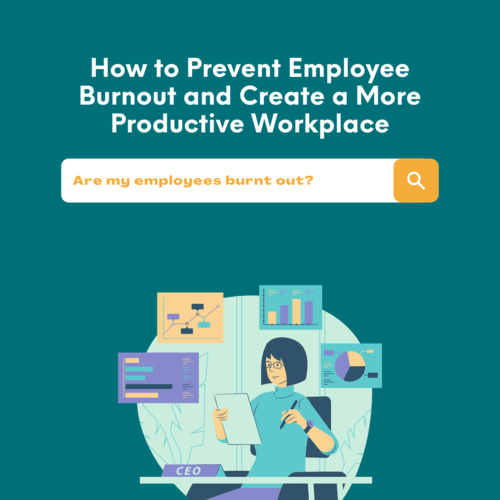Grounding techniques are designed to help a person cope with traumatic memories or strong emotions and can be used to pull your attention away from painful emotions so that you can focus on the present moment. Of course, anyone can use grounding techniques as a tool to help calm distressing feelings, but they’re especially beneficial for people dealing with a generalized anxiety disorder (GAD), post-traumatic stress disorder (PTSD), and panic disorder (PD).
With anxiety disorders ranking as the most common mental health concern in the United States, millions struggle with anxiety every day. Intense anxiety can cause a significant amount of psychological and physical distress that’s only heightened when you don’t take the proper steps to ease the painful feelings. Daily life can be filled with all sorts of negative emotions, but grounding techniques can help you break free from distressing thoughts, so you can focus on what matters.
While grounding techniques are a great short-term coping strategy to use when struggling, they do not replace professional mental healthcare. Instead, they should be considered a supplement to professional treatment.
WHAT IS GROUNDING?
Grounding is a type of meditation that helps put you back in touch with the present moment by focusing attention on the physical world around you. Grounding exercises are quick and easy to try for yourself, and you can use them as a coping strategy in lots of different situations. They can be particularly helpful if you are feeling very worried, stressed out, distracted, or overwhelmed. Most grounding exercises draw your attention to the present by focusing on one or more of your 5 senses. Often, grounding aims to help you reconnect with your body. Your mind can often live in the past or the future, but focusing your attention on the physical sensations in your body can be a powerful way to return to the present.
WHAT CAN GROUNDING HELP WITH?
People find grounding exercises useful for supporting their wellbeing in lots of different ways. You can think of grounding as a tool that you can add to your self-care toolkit, no two people will use it in exactly the same way or for the same reasons. Here are some of the things grounding can help with.
Managing worries
Grounding exercises can be a great temporary support if you’re feeling worried or anxious. Worrying never feels good, but it can sometimes be useful because it can help you to solve problems or make a change. However, if you find yourself worrying about things that are out of your control, this isn’t helpful and you can use grounding to take your mind off the worry and refocus on the present.
Coping in stressful situations
Experiencing stress is a normal and understandable reaction when you’re navigating a challenging situation. While it happens to everyone from time to time, it’s distressing to find yourself stuck in an environment where you feel your stress levels become overwhelming. In situations like this, a quick grounding exercise can help you manage your emotional reaction and feel more calm and in control.
Combating overthinking
Grounding can be helpful for overthinking. If you find yourself continuously thinking the same thoughts about the past or future that are upsetting you, you can use grounding exercises to help guide your attention away from those thoughts and towards the here and now.
Improving your focus
Lots of people use grounding to help their focus and concentration. If you’re struggling to complete a task because your head is muddled, grounding techniques can help clear your mind and help you concentrate. This can be useful if you’re doing homework or coursework, getting ready for an exam. Athletes can also use grounding exercises to get into the zone before a game, race, or performance.
Practicing mindfulness
Grounding exercises are often used as part of mindfulness meditation. If you get home after a long stressful day, meditating can feel like the last thing you want to do, even if you know it would help you unwind. When your state of mind is distracted and unfocused, grounding can pull you back to earth and help you to enter a mindful headspace.
9 GROUNDING TECHNIQUES FOR ANXIETY
There are many techniques you can practice, but these 10 are a great place to start. The first five focus on physical grounding techniques, while the last five focus on mental/cognitive grounding techniques.
1. Breathing exercises
There are many different types of breathing exercises that help you to focus and lower anxiety. One activity, diaphragmatic breathing, has been scientifically shown to help those who practice it improve their concentration and mood and lower cortisol levels (a marker for stress). For this, you will breathe deeply, allowing your belly to swell, and focus on how your body expands with each inhale and contracts with each exhale.
2. Physical exercise
Try a few exercises or a bit of yoga. You can also do jumping jacks, skip rope, jog in place, or clench and stretch different muscle groups one by one. Pay attention to how your body feels with each movement. How does it feel when your hands or feet touch the floor or move through the air?
3. Dance
Put on your favorite music, and dance like no one else is there. Feel the strength in your limbs as you move with and against gravity. Feel the rhythm and percussion of the music. Grounding is a key concept in dance and movement therapy.
4. Engage the senses
Try the 5-4-3-2-1 technique to list items around you that you notice with your senses. For example, notice five things you see, four things you hear, three things you can touch from where you’re sitting, two things you can smell, and one thing you can taste. Try to pick out the little things you might not always pay attention to, such as the hum of your computer or a speck of color in the carpet.
5. Notice your surroundings
Make it a point to notice the feeling of the air against your skin as you move, the grass beneath your feet, the sound of nearby traffic, or any other objects in your immediate area. Intentionally noticing your surroundings has been shown to help decrease feelings of dissociation and improve the quality of life for those with post-traumatic stress disorder.
6. Distraction activities
Pick a favorite activity that requires a little bit of concentration. You can read a book, watch a TV show, play a game on your phone, or work on a puzzle. Try to focus entirely on that activity instead of your feelings of anxiety or the situations causing them.
7. Talk with someone
Connecting with the people around you is a great way to stay present. You can talk about anything, not necessarily just what’s bothering you (but that helps too). Alternatively, if no one is around, you could call someone, send a text or email, send a card, or write a letter.
8. Mindfulness practices
Mindfulness is the non-judgmental awareness of the present moment. This means noticing things as they are without labeling them as good or bad. You can be mindfully aware of your sensations, thoughts, bodily states, consciousness, and the environment. Mindfulness practices such as sitting meditation, body scans, and yoga can help you focus on and accept your body’s sensations.
9. Use an anchoring phrase
Anchoring phrases or cognitive updates are statements of known facts that you can recite to help calm down. This might be something like, “I’m Full Name. I’m X years old. I live in City, State. Today is Friday, March 3. It’s 10:04 in the morning.” Keep adding as many factual details as you need. You can also write these on an index card to help with dissociative episodes or nightmares. These facts can ground you in reality.
These techniques are useful tools to help cope with distressing thoughts, situations or emotions in the moment. They provide relief, however, it’s generally temporary. If anxiety, stress or feeling overwhelmed are things that you struggle with regularly and you continue to have trouble coping with these feelings, please call us today at (415) 799 – 3688 to schedule a session with one of our qualified clinicians today!











